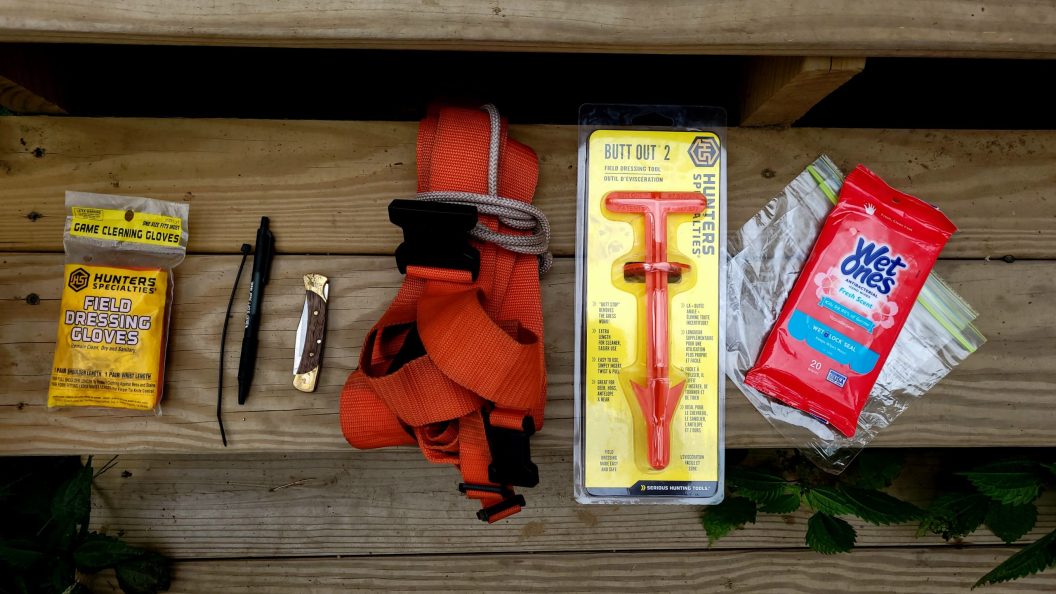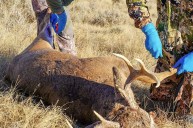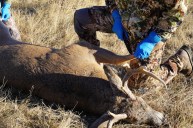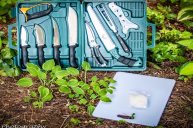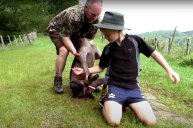You've made the fatal shot and located your downed deer. The glory is yours, but now the real work begins. The next step after successfully harvesting a deer is to field dress it. Field dressing, or gutting a deer, refers to the process of removing the deer's internal organs, such as the heart, lungs, intestines, etc. Gutting the deer is an important step to be sure. Leaving the internals inside the deer too long after death will cause harmful bacteria to grow and spoil the meat. Removing those organs not only eliminates that bacterial growth but cools the deer, too. Cooling the carcass will help to reduce that bacteria.
Another benefit of field dressing is that it gets rid of some extra weight, which makes the deer easier to move from the location in the field back to the base camp or vehicle. That extra weight that is removed (internal organs) can be left in the field and will be eaten by animals that live there, such as coyotes and birds, making it a win-win for all involved—except for the deer of course.
Every new hunter initiated into our family's hunting group is blessed with a DIY field gutting kit, hand compiled by my dad. It is a crucial part of the day hunting pack and should be brought along on every excursion. Here are the details.
The Kit
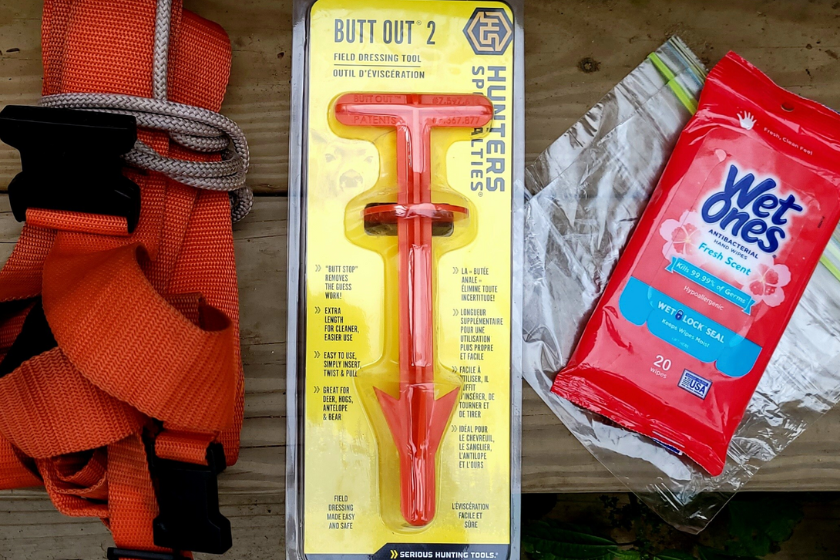
This kit is designed specifically for field dressing whitetail deer. Other types of hunting may have different needs. Consider what you are hunting and what variables may come into play while assembling your own DIY field gutting kit.
Drag Rope
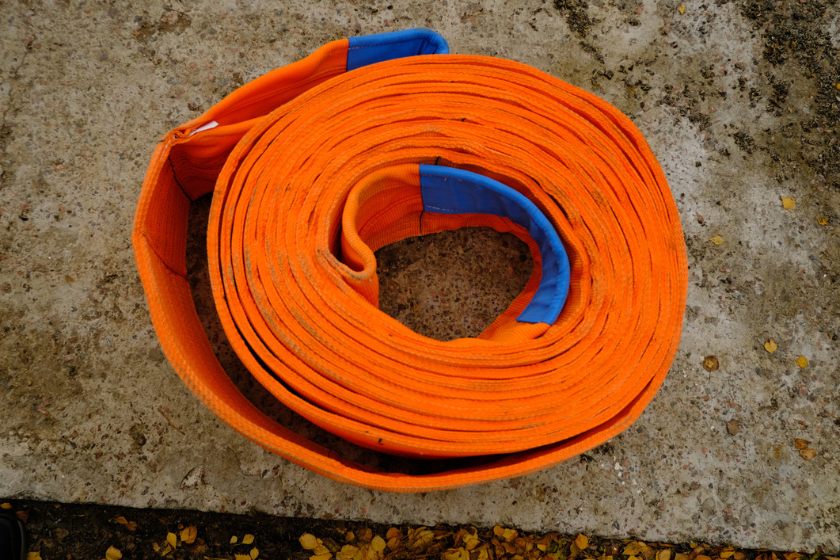
The drag rope is usually the first thing that comes out of the field dressing kit, because the deer might fall in a location that is not ideal for the dressing process. Deer often rush to bushes or thickly wooded areas, swampy spots and creek beds, or fall across logs or other debris. The drag rope is used to drag the deer from where they are found to a flat, open area where there is room to work. After the field dressing, that same rope will be used to drag the deer the rest of the way. Some hunters have to drag the deer a very long distance. One trick that can be utilized is adding a harness to the rope that gets strapped onto the hunter's body to more evenly disperse the weight while dragging, which takes the pressure off the hands and wrists.
Sharp Knife
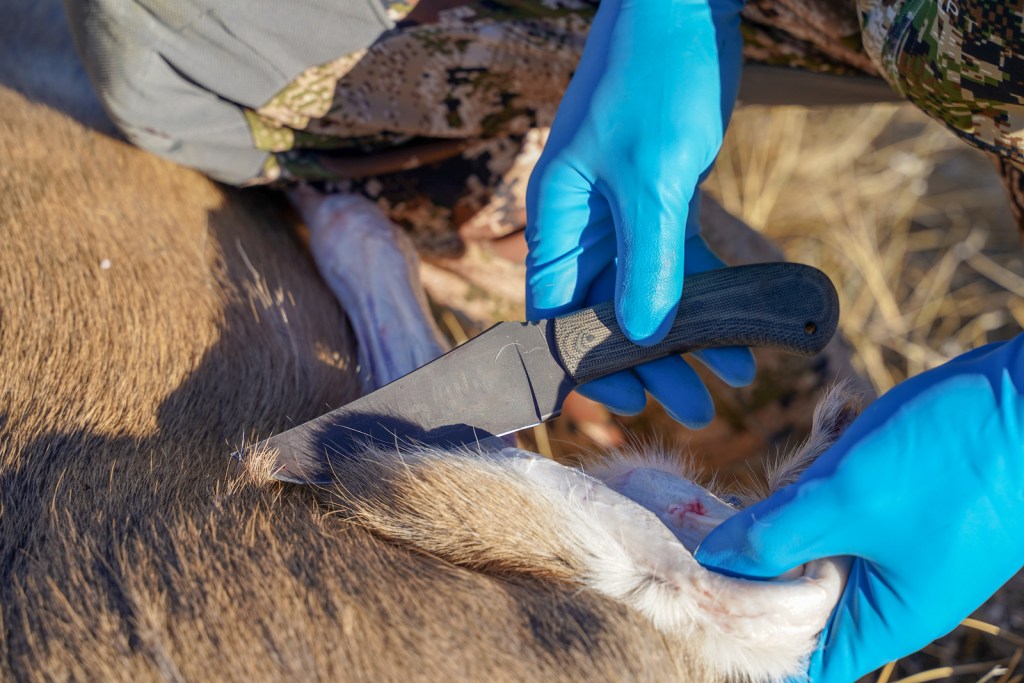
When cutting through skin and tissue, a very sharp knife is essential. A dull knife will not only slow the process down but complicate it more than it needs to be. Cutting with a dull knife requires the hunter to use more pressure. That can lead to slips, cuts, and muscle fatigue. Avoid all that and bring a sharp knife.
Field Dressing Gloves

Some hunters opt to field dress with bare hands, but many do not. My kit always includes field dressing gloves, because your arms will be way up inside the body cavity, feeling around for organs and cutting away tissue. And there's nothing wrong with gloves that go all the way up to the elbow, as those are best for keeping your arms as clean as possible during this process.
Butt Out Tool

Every hunter has their own way to remove the anus, but I recommend the Butt Out tool. It keeps the process clean and straightforward. The Butt Out tool is a simple device that is inserted into the anal cavity. With a simple twist-and-pull motion, part of the intestine is removed.
Additional Kit Items
Pen, Zip Tie, and Seal Bags: Including the pen and zip tie in your field gutting kit serves to make tagging your deer quick and easy. Tagging the deer immediately after harvest is important. It's easy to get caught up in the excitement but making sure all your legal requirements are met is of the utmost importance. Use the pen to fill out your tag and then use the zip tie to secure the tag to the deer. Zipper seal bags are optional. If you like to keep the heart and liver to eat, having a clean place to store them during transport helps. A simple zipper seal sandwich bag gets the job done.
Headlamp: Many deer are harvested in the dusky moments right before twilight, which means you will be field dressing in the dark. A headlamp will help illuminate what you are looking at without tying up your hands. Both hands are needed to effectively field dress a deer.
Hand Wipes: Optional, but nice to have to get any residual bits or fluids that may have been transferred during the gutting process. Sometimes gloves seep or even get sliced by those sharp knives and hands get contaminated. A quick swipe with an antibacterial hand wipe cleans away any harmful bacteria that may be lingering.
As one additional tip, remember that the field dressing process can be quite messy. If posting any photos of it to social media, it doesn't hurt to keep them tasteful and explain what is happening in the photos. To an untrained eye, all the blood and entrails could portray hunting in a way that could easily be misconstrued.
